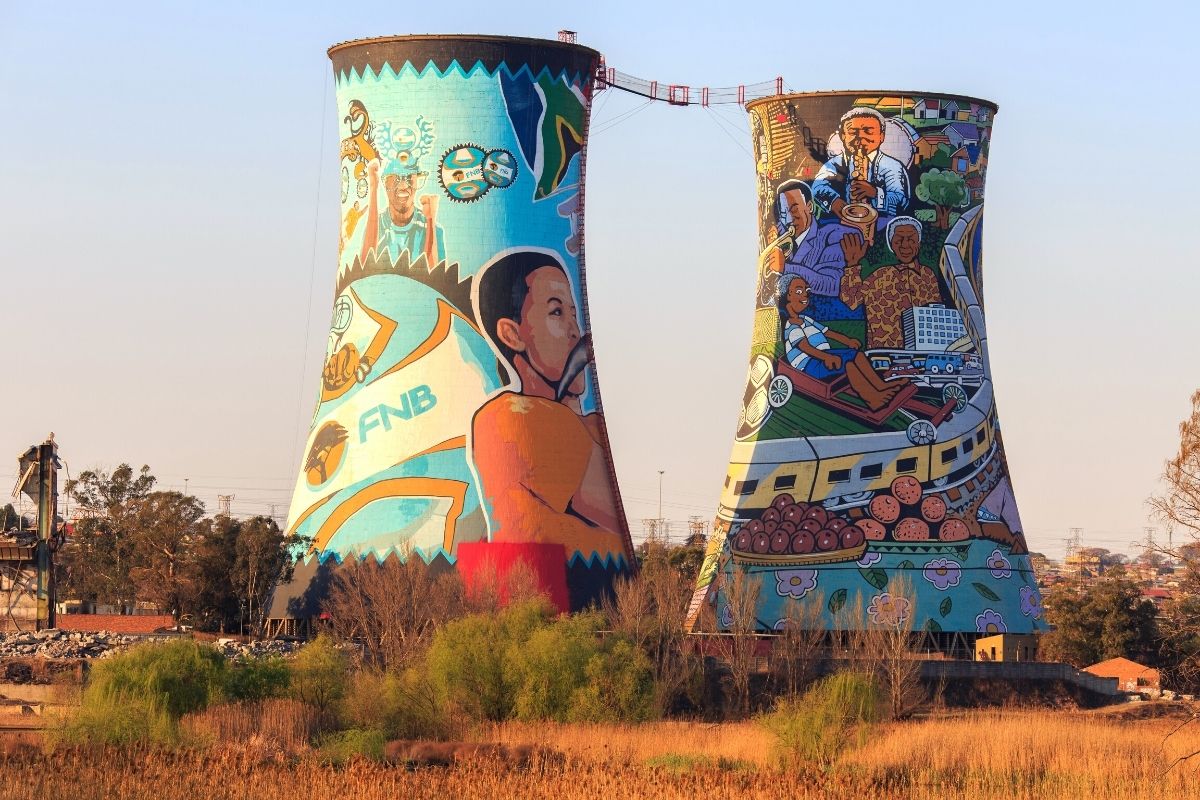Not known Facts About Johannesburg North Attractions
Not known Facts About Johannesburg North Attractions
Blog Article
The 6-Second Trick For Johannesburg North Attractions
Table of ContentsThe Definitive Guide for Johannesburg North AttractionsSome Ideas on Johannesburg North Attractions You Should Know7 Easy Facts About Johannesburg North Attractions DescribedHow Johannesburg North Attractions can Save You Time, Stress, and Money.Indicators on Johannesburg North Attractions You Should KnowAn Unbiased View of Johannesburg North Attractions
The city owes its location to the existence of a much more priceless resource: gold. The city grew on the side of the Witwatersrand Key Reef, a subterranean stratum of gold-bearing quartz-silica empire that arcs for numerous miles below the Highveld. Most of the gold mines in the city ceased operation in the 1970s, however in its day the Witwatersrand gold market made up more than 40 percent of the world's yearly gold production.Johannesburg has a pleasant environment. Summertime temperatures average about 75 F (24 C); winter months temperature levels average regarding 55 F (13 C) and only sometimes dip listed below cold. The city delights in regarding 8 hours of sunshine daily in both winter months and summer. Rainfall standards concerning 28 inches (700 millimetres) per year, yet the complete differs considerably from year to year.
What rain the city obtains drops nearly solely in the summer season, often in magnificent late-afternoon electric storms. Air contamination positions a considerable problem, particularly in the cold weather, when thermal inversions hamper the westward circulation of air from the Indian Ocean. Contamination is most severe in the largely cleared up Black territories on the city's periphery, where many homeowners still rely upon coal for gas.

What Does Johannesburg North Attractions Do?
The equilibrium of the city is inhabited by whites. Lodging varies in character and top quality.
Physical development, although rather restricted by transportation, proceeded promptly as immigration to South Africa, and Johannesburg in particular, boosted drastically.
Many bad suburbs were mixed, with bad blacks and whites cohabiting, although the rich suburbs were normally booked for whites. This altered with the political election of the National Event in the 1948 elections, who started to formalise the system understood as racism. Discrimination officially assigned which residential areas each race could reside in under the Team Locations Act.
The previous system of eleven numbered regions was reorganised in 2006. Marshalltown, as seen from the top of the Carlton Centre. The M1 and M2 run behind the buildings, and the southern suburban areas prolong past the highway limit. The central city of Johannesburg is located within the city's Region F. The approximated population of the region is 200,000, [] but the number of people residing in the central city on an informal basis is unknown, as several are illegal immigrants. A lot of higher-income citizens and white individuals have actually transferred to the northern residential areas and have been changed by lower-income black people. The joblessness, education and learning, and age accounts of the area are all unknown, as a result of the trouble of acquiring dependable information about the area.
Johannesburg North Attractions for Dummies
Centred on the CBD, the area consists of the suburban areas of Yeoville, Bellevue, Troyeville, Jeppestown, and Berea to the east. To the west it infects Pageview (Johannesburg North attractions) and Fordsburg. There are small industrial parks to the south, such as City West-Denver and Benrose. Around 800,000 commuters travel through the central city each day, and it functions as a regional buying node for visitors from the southerly suburbs. Yeoville and Bellevue have a mix of house buildings and single household units on small great deals. The area is situated on a mountainous divide that runs from eastern to west.

Johannesburg Stadium, a training school for both the Golden Lions and Orlando Pirates, is surrounding. The eastern residential areas of Johannesburg are situated in the city's 7th [] and 9th [] regions. The area is also functionally integrated with East Rand boundary communities outside of the main boundary of Johannesburg, such as Bedfordview and Edenvale (both part of original site Ekurhuleni Metropolitan Municipality).
Some Known Facts About Johannesburg North Attractions.
R. Tambo International Flight Terminal). The eastern suburbs are several of the earliest locations of Johannesburg, there are big areas of Jewish and other European histories, the majority of the population is English talking. There are 3 golf training courses as well as a number of safeguarded ridges with viewsites. There are a number of strong and up-market home entertainment and shopping areas in the east such as the Eastgate Buying Centre and the Greenstone mall.
Initially developed to house male migrant employees, many have been improved as residences for pairs and households. The suburban area was not traditionally enabled to produce work centres within the area, so nearly all of its citizens are travelers to various other parts of the city.
Unknown Facts About Johannesburg North Attractions
The N1 Western Bypass connects the north suburban areas with the north-western residential areas. The property areas in the north suburban areas are mainly formal, without any substantial locations of casual real estate, or real estate that lacks a permanent structure. This is a well-known location, there is a pattern of land usage modification from residential to commercial, especially along major arterial roadways and around well-known nodes.
The area is well attached to roadway networks, particularly along the north-south see axis created by the M1 and N1. Roads to the east and west are much less well established, as there are no highways taking a trip because instructions. In the direction of the north border of the city, the thickness of development decreases, leaving big areas of undeveloped land around Midrand.
Getting The Johannesburg North Attractions To Work
, which is located on a hill neglecting the internal city and Hillbrow.
Report this page